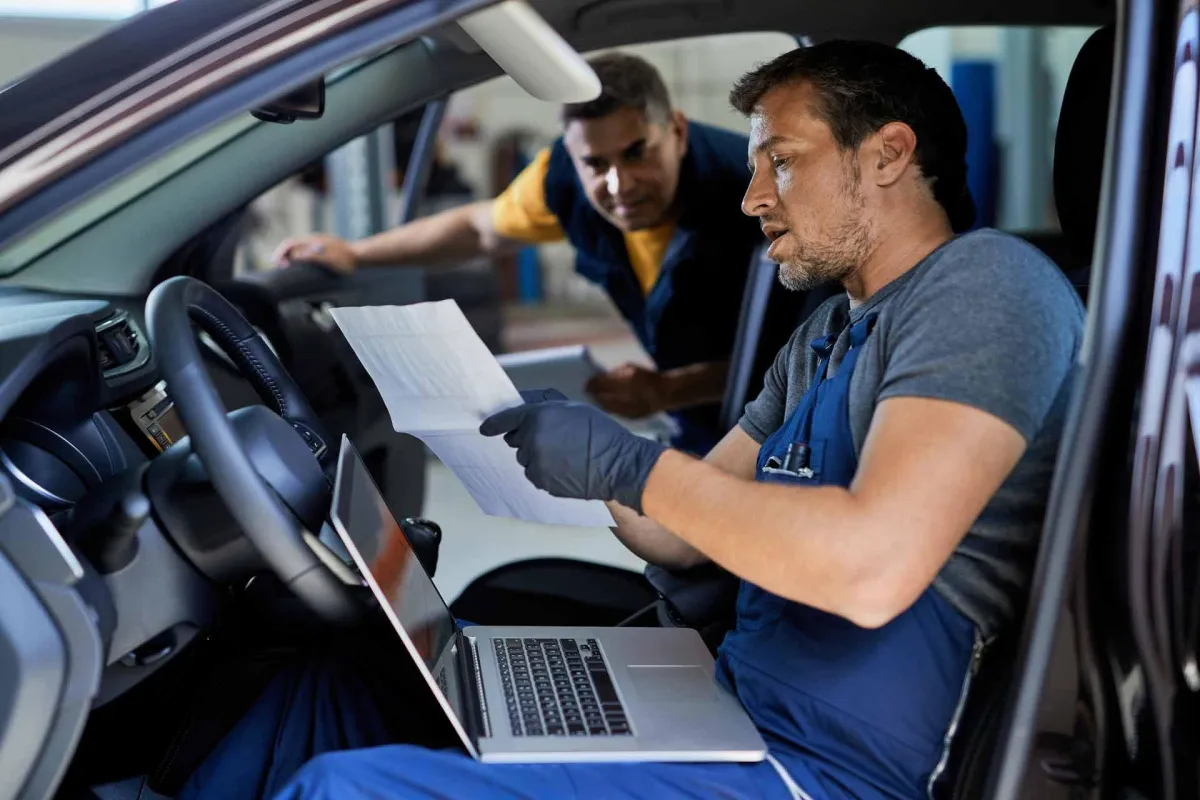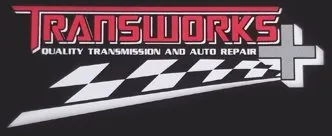East Bethel, MN
Call Us 763-413-7001
FREE Estimates | Factory Warranties on New Auto Parts
Explore our auto repair blog for valuable tips, trends, and maintenance advice


Steering System Diagnostics: What Causes Pulling and Drift
You’re driving down Highway 65 through East Bethel, and suddenly your steering wheel starts to pull slightly to one side. You tighten your grip, correct your direction, and keep going. But it keeps happening. The car drifts, especially when you let go of the wheel for even a second.
That small pull isn’t just annoying — it’s your vehicle trying to tell you something. Steering drift or pull can signal anything from tire pressure imbalance to deeper suspension or alignment issues. Ignoring it means uneven tire wear, poor handling, and higher fuel consumption.
At Transworks Plus, we specialize in diagnosing steering system problems for Minnesota drivers. Let’s break down why your car might be pulling or drifting — and how proper diagnostics can keep you driving straight and safe.
Understanding the Steering System and Vehicle Drift
Your steering system is designed to maintain directional stability with minimal driver correction. When it starts to drift, the issue usually lies in how power, alignment, or suspension components distribute force to your wheels.
Here’s how it works in simple terms:
The steering column connects your steering wheel to the rack-and-pinion or gearbox.
The tie rods and ball joints transmit steering input to the wheels.
The suspension supports the weight of the vehicle and maintains contact with the road.
The alignment ensures all four wheels point in the correct direction and angle.
When any one of these systems is off, your car may begin to “wander,” “drift,” or “pull.” The steering wheel might not return to center easily, and you might find yourself constantly making small corrections just to stay straight.
Common Causes of Steering Pull and Drift
Not all drift is created equal — and not every pull comes from the steering system itself. Here are the most common reasons we see in our East Bethel shop:
1. Wheel Alignment Issues
This is the most frequent cause. Misalignment makes one or more wheels point slightly off-center. Even a few degrees of angle difference creates drag that pulls your vehicle to one side.
Typical signs:
Steering wheel not centered when driving straight.
Uneven or rapid tire wear.
Vehicle veers right or left after hitting a bump.
2. Uneven Tire Pressure or Tread
Tires play a huge role in stability. If one side has lower air pressure or uneven tread wear, it creates rolling resistance that causes drift.
Fix: Check and adjust tire pressure regularly, and rotate or replace worn tires as needed.
3. Suspension Wear
Worn suspension components — such as struts, shocks, control arm bushings, or ball joints — can alter how your tires contact the road. When one side sags or rebounds differently, the car naturally pulls that direction.
Key indicator: The car feels unstable or “floaty” over bumps.
4. Brake Drag or Caliper Issues
A partially stuck brake caliper can create friction on one wheel, pulling the car toward that side even when brakes aren’t applied.
What to look for:
Burning smell near a wheel.
Heat or smoke after short drives.
Pull only while braking.
5. Power Steering Imbalance
If your vehicle has hydraulic or electric power steering, unequal assistance between sides can make turning easier in one direction and harder in the other.
Potential causes: Low power steering fluid, worn steering rack seals, or faulty assist motor.
6. Road Conditions and Crown
Sometimes, the road is the problem. Roads are designed with a “crown” — a subtle slope for drainage. Excessive crown or rutting can create a sensation of drift, especially in sensitive or misaligned vehicles.
A diagnostic test drives helps rule this out.
How Steering Diagnostics Work
At Transworks Plus, our steering system diagnostics combine hands-on inspection and precision measurement to pinpoint exactly what’s happening.
Here’s what the process looks like:
Road Test Evaluation – A certified technician drives your vehicle on a controlled route to observe behavior under real conditions.
Steering and Suspension Inspection – We check tie rods, ball joints, struts, and bushings for play, corrosion, or wear.
Wheel Alignment Analysis – Using computerized alignment tools, we measure caster, camber, and toe angles to factory specifications.
Tire and Pressure Check – We confirm tire health and balance. Even a small pressure difference can mimic a steering issue.
Brake System Assessment – Calipers, pads, and rotors are inspected for drag or uneven wear.
Steering Rack and Fluid Check – For hydraulic systems, we check for leaks, fluid condition, and rack performance.
After diagnostics, we’ll show you exact readings and discuss whether a simple alignment or a deeper suspension repair is needed.
When to Schedule Steering Service
If your car drifts even slightly, it’s worth a check. Small problems today often lead to expensive ones later. You should schedule a steering inspection if you notice:
The car consistently pulls left or right.
Your steering wheel is crooked when driving straight.
You feel vibration or looseness in the wheel.
Tires are wearing unevenly or prematurely.
Braking causes the car to veer.
Early intervention saves money — especially in Minnesota, where potholes, snow buildup, and freezing temperatures can knock your alignment out of spec overnight.
FAQs About Steering Pull and Diagnostics
Why does my car pull after getting new tires?
Fresh tires can reveal pre-existing alignment issues. If the pull starts immediately after installation, a quick alignment check usually resolves it.
Can low tire pressure cause my car to pull?
Yes. Just 5 psi difference between sides can cause noticeable drift, especially at highway speeds.
Is it safe to drive with steering drift?
It depends on severity, but in most cases, no. Drift increases stopping distance, tire wear, and driver fatigue — all safety risks.
How often should I get an alignment check?
At least once a year, or after hitting major potholes, curbs, or replacing suspension parts.
Can power steering problems cause drift?
Yes. A failing steering rack or uneven hydraulic pressure can make one direction easier to turn than the other.
Straight Steering, Smooth Driving
Pulling or drifting isn’t just an irritation — it’s your car’s way of signaling imbalance. A simple inspection can reveal whether it’s a tire issue or something deeper in your suspension or steering system.
At Transworks Plus, our technicians use diagnostic precision and local know-how to keep East Bethel drivers safe and steady on the road. We handle everything from alignments to steering rack repairs, ensuring your vehicle tracks straight — no matter what Minnesota roads throw at it.

Schedule Your Auto Services Today
Keep your vehicle in top condition with our professional maintenance services. Book your next appointment now to ensure your car runs smoothly and efficiently.
Get started on reliable vehicle performance today.
FOR DIAGNOSTICS, MAINTENANCE, OR ANY AUTO REPAIR NEEDS

CALL US
(763) 4137 001

AUTO SERVICES

CONTACT INFORMATION
Call us: 763-413-7001
Address:
18607 MN-65, East Bethel, MN 55011
Business Hours
Mon - Fri: 7:30 AM– 5:00 PM
Sat & Sun: Closed
© 2025 All Rights Reserved | Transworks Plus | Privacy Policy
